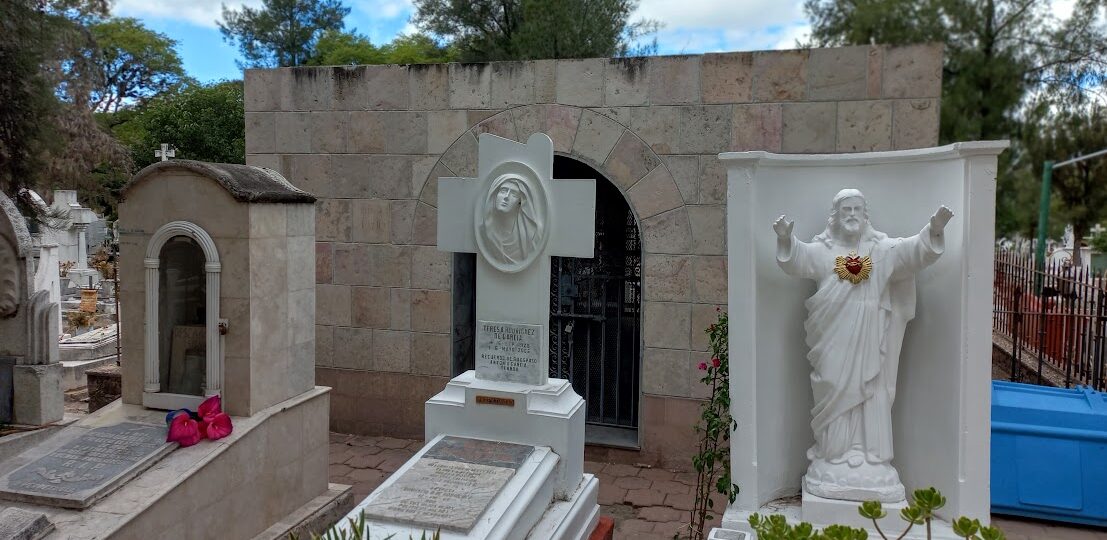 Third row in at our Guadalupe cemetery is a substantial, Federal-style mausoleum for Oratorio priests. The Oratorio church in centro, run by said priests, is twofold unique.
Third row in at our Guadalupe cemetery is a substantial, Federal-style mausoleum for Oratorio priests. The Oratorio church in centro, run by said priests, is twofold unique.
One is the founder’s preoccupation with the notion that joy, laughter and song bring one closer to God. Secondly, if you become an Oratorio priest you’ll be a parish priest here in town for the rest of your life, there is no moving up or on. Hence an Oratorio will never be a bishop or pope.
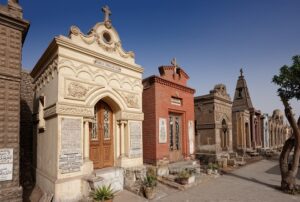 Dedicated to the residents of town, it seems only fair they’ve a lovely mausoleum. However, mausoleums have fallen out of favor begging the questions why were they ever poplar and why aren’t they anymore?
Dedicated to the residents of town, it seems only fair they’ve a lovely mausoleum. However, mausoleums have fallen out of favor begging the questions why were they ever poplar and why aren’t they anymore?
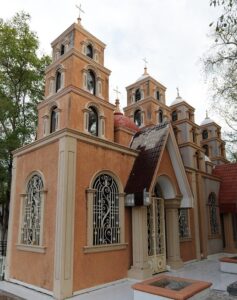 Mausoleums hit their architectural zenith in the nineteenth and early twentieth centuries as aboveground internments became vogue appeasing the egos of robber barons, entertainers and politicians. From 1830 until the Great Depression in the US the rich competed in real estate markets, only now located in pastoral, bubonic cemeteries located outside the city’s hub.
Mausoleums hit their architectural zenith in the nineteenth and early twentieth centuries as aboveground internments became vogue appeasing the egos of robber barons, entertainers and politicians. From 1830 until the Great Depression in the US the rich competed in real estate markets, only now located in pastoral, bubonic cemeteries located outside the city’s hub.
 What contributed most to the notion of mausoleums in the 18th century?
What contributed most to the notion of mausoleums in the 18th century?
The Taj Mahal. The Taj Mahal’s palace-garden mausoleum became a must-see on every world-traveler’s bucket list. As were mausoleums in then being excavated Pompeii and Egypt (aka pyramids).
S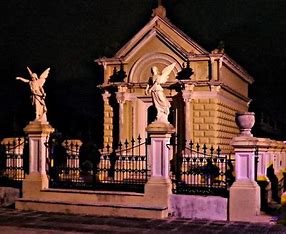 uddenly graveyards became beautiful parks called cemeteries from the Greek for sleeping chamber. Cemetery was a far more romantic word for death than previously bandied about.
uddenly graveyards became beautiful parks called cemeteries from the Greek for sleeping chamber. Cemetery was a far more romantic word for death than previously bandied about.
Frank Lloyd Wright joked how delightful it was to design mausoleums since he didn’t have to worry about windows that opened, how spaces flowed or where to run plumbing or electrical.
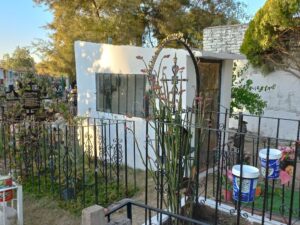 What killed the Golden Age of Mausoleums? A mixture of the Great Depression, federal income tax and shifting tastes in architecture. Inheritance taxes took away the ability to build many mausoleums plus modern man often didn’t give a wit about being interred with ancestors they never knew in areas they never lived.
What killed the Golden Age of Mausoleums? A mixture of the Great Depression, federal income tax and shifting tastes in architecture. Inheritance taxes took away the ability to build many mausoleums plus modern man often didn’t give a wit about being interred with ancestors they never knew in areas they never lived.
Today most every cemetery has mausoleums – some architecturally significant while others merely blocks forming utilitarian crypts. Regardless, like a doll house, there is something irresistible about little homes for people that don’t need a bathroom or kitchen!
